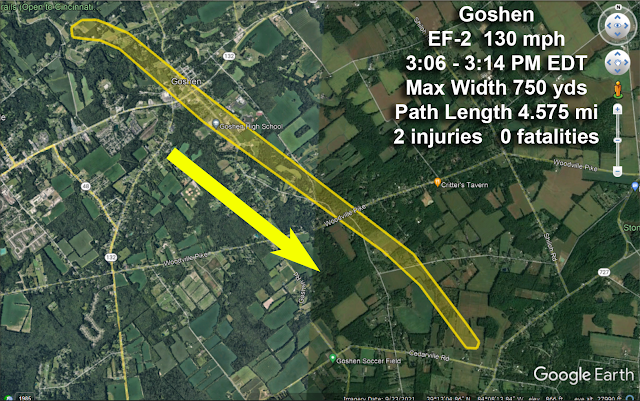The Tornadoes of 6 July 2022 near Cincinnati, OH, USA
Around 3PM EDT 6 July 2022 three tornadoes touched down east of Cincinnati, two in Clermont County and one just east in Brown County. The maps below show the locations.
What Meteorologists Look for When Tracking Tornadoes on Radar
The video below, with an audio narration, shows the movement of the severe thunderstorms and outflow boundaries resulting in the three tornadoes. Tools I used: RadarScope, a professional level radar analysis tool, GR2 Analyst for the Normalized Rotation (NROT) data, Google Earth Pro, Photoshop and Camtasia Studio.- The storm interacted with the outflow boundary and strengthened it just east of Goshen.
- The OFB did not "cause" the tornado, because the storm was rotating before it interacted with the OFB.
- The storm did not ride up and over the OFB the the rain cooled pool of air behind it as many storms do (videos below).
- Most likely the OFB acted to increase surface convergence ahead of the updraft core, strengthening the updraft enough to increase the rotation through vertical stretching see video below).
A Typical Thunderstorm - No Audio
Other Video Examples of Outflow Boundaries and Their Effects for You
All videos are silent.








